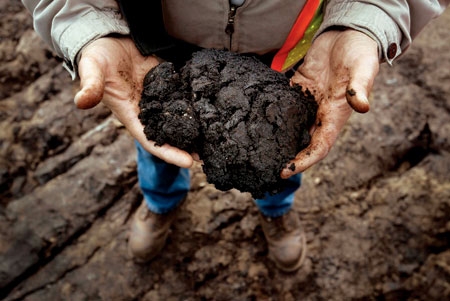
Months after the Keystone XL pipeline was cancelled, a new forecast said Canadian oil sands production fully recovered from the 2020 “COVID-19 Shock” and already exceeded pre-pandemic levels. What it means is the pipeline won’t be built and the large amount of tar sands oil won’t be flowing down through the U.S. and to its Gulf states refineries.
The latest forecast by the IHS Markit Oil Sands Dialogue expects Canadian oil sands production to reach 3.6 million barrels per day (MMbd) in 2030, an increase of 650,000 barrels per day compared to 2021 levels (900,000 b/d from 2020). The previous IHS Markit forecast expected production to reach 3.8 MMbd in 2030.
“Canadian oil sands production recovered rapidly to exceed pre-pandemic levels by the end of 2020 and the outlook for longer-term growth remains substantial,” said Kevin Birn, vice president and head of Canadian oil market, IHS Markit. “Nevertheless, lingering impacts from the “COVID-19 Shock,” delays to critical transportation infrastructure, and rising energy transition pressures have trimmed that growth outlook from previous estimates.”

Even prior to the pandemic, IHS Markit expected the coming decade to be one of sustained-but-slower growth for the oil sands, with transportation constraints such as a lack of adequate pipeline capacity and the resulting sense of price insecurity in western Canada weighing on new large-scale incremental investments.
“Although oil prices have rebounded and even exceeded pre-pandemic levels, producers are prioritizing rebuilding their balance sheets, paying down debt and returning cash to shareholders,” said Birn. “These trends, which will delay a rise in upstream spending in the oil sands, factored into the reduction in the IHS Markit long-term growth expectation.”
The recent cancellation of the Keystone XL pipeline is not expected to carry an immediate impact on the latest IHS Markit outlook. However, pipelines continue to be a source of uncertainty that factors into the overall outlook.
If Enbridge Line 3 and Trans Mountain pipeline, as well as other announced optimizations, are able to proceed as planned pipeline export capacity may be adequate to keep the market balance. However, in the absence of Keystone XL pipeline, there is the potential for high levels of export pipeline utilization which would leave little room to absorb any system upsets and could contribute to regional price volatility.
Source: Business Wire





